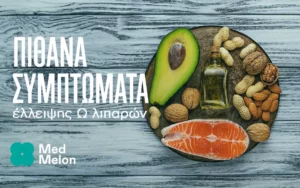Scientific Names of Centella: Centella asiatica (L.) Urban [Fam. Umbelliferae], Centella, Gotu Kola, Hydrocotyle, Indian Pennywort, Indian Water Navelwort, Hydrocotyle asiatica.
Forms:
Dried leaf for teas; standardized extracts; creams containing Centella extracts.
Traditional Usage:
– Acne
– Aging Disorders
– Alzheimer’s Disease
– Antioxidant
– Age Spots (skin)
– Behavioral Disorders
– Burns
– Chronic Venous Insufficiency
– Cold Sores
– Dermatitis
– Diabetic Skin Ulcers
– Eczema
– Edema
– Foot Swelling
– Infection
– Itching
– Leprosy
– Memory
– Mental Functioning
– Mental Retardation
– Microangiopathy
– Psoriasis
– Scar Healing
– Skin Disorders
– Skin Grafts
– Skin Ulcers
– Stretch Marks
– Surgical Wounds
– Ulcers (external non-healing)
– Varicose Veins
– Vein Health
– Venous Insufficiency
– Water Retention
– Wounds
– Wrinkles
Overview:
Centella, Centella asiatica (L.) Urban [Fam. Umbelliferae], also known as Gotu Kola and Hydrocotyle, is a herb native to India that is rich in terpenoids including asiatic acid, madecassic acid and asiaticoside known to provide dermatological benefits. Centella has been documented to aid wound healing in a large number of scientific reports. Centella extracts are recommended for scar management as they stimulate the maturation of scar tissue by increasing the production of type I collagen and reducing inflammation. According to Dr. James Duke in The Green Pharmacy, naturopathic physicians recommend taking Centella as a tea (along with foods rich in vitamin C) and applying Centella extracts externally for treatment of burns. Studies show that the combination of vitamin C and three compounds in Centella – asiatic acid, asiaticoside and madecassic acid – stimulate collagen synthesis, a key element of skin repair. Collagen forms the basic structure of skin and connective tissues and is the most abundant protein in the human body. Other studies show that asiatic acid stimulates the development of the connective tissue that must form in order for wounds to heal. Based on clinical trials, Centella extracts applied externally have proven useful in treating cutaneous wounds, skin grafts, surgical incisions, psoriasis, eczema, fistulas, other skin conditions, gynecological wounds, gangrenous ulcers and is among the most promising treatments for leprosy. For treating skin conditions, Dr. Duke recommends making a poultice out of the crushed leaves of Centella or soaking cotton balls with tincture extracts and applying them to affected skin areas. New research shows that Centella leaf extracts taken internally are also useful for treating circulatory problems of the lower limbs including chronic venous insufficiency, water retention in the ankles, foot swelling (edema) and varicose veins. Stimulation of collagen synthesis in the vein wall increases vein tonicity and reduces vein distention.
Other Positive Clinical Results:
A clinical study involving 30 mentally retarded children has shown that asiaticoside improves general ability and behavioral pattern when given over a period of 12 weeks. It also increased the mean concentrations of blood sugar, serum cholesterol and total protein and reduced blood urea and serum acid phosphatase concentrations in 43 adults. It is noted that vital capacity was also increased. Dr. Duke in The Green Pharmacy also notes that this herb has a centuries-old folk reputation as a memory enhancing herb that helps to improve mental vigor. The juice of Centella leaves or whole plant is also documented to relieve itching associated with prickly heat. An interesting new study has shown that slimming liposomes containing Centella may be useful for weight loss.
Active Ingredients:
Centella asiatica leaves and above-ground parts are rich in terpenoids including asiatic acid, madecassic acid and asiaticoside. Other terpenoids include: centelloside, centellic acid; centoic acid, asiaticentoic acid, madecassoside, brahmoside, brahminoside (saponin glycosides). Aglycones are referred to as hydrocotylegenin A-E; compounds A-D are reported to be esters of the triterpene alcohol R1-barrigenol. The herb also contains: several amino acids; flavonoids including quercetin, kaempferol and various glycosides; volatile oils including beta-caryophyllene, farnesene, germacrene D (sesquiterpenes) as major components; alpha and beta pinene. The major terpenoid is stated to be unidentified. Other constituents include an alkaloid called hydrocotylin, a bitter principle called vallerine, fatty acids including oleic, linoleic, linolenic, palmitic, stearic acids and lignocene; phytosterols including campesterol, sitosterol and stigmasterol; resin and tannin.
Suggested Amount:
Centella leaf is recommended with the dosage of 0.6 g taken directly or as a tea three times daily. Extracts are taken accordingly.
Drug Interactions:
Centella extracts may interfere with existing hypoglycaemic therapy and increase serum cholesterol. Only use Centella extracts internally (on a long-term basis) with the supervision of a physician.
Contraindications:
Centella is contraindicated during pregnancy and excessive use should be avoided during lactation. Centella extracts should only be taken internally (on a long-term basis) with the supervision of a physician. Diabetic patients, persons suffering from high cholesterol and photosensitive individuals should consult with a physician prior to taking Centella internally.
Side Effects:
A burning sensation has been reported in 4 of 20 patients after the application of an aerosol preparation containing Centella. However, it is not clear whether it was due to Centella or the many other constituents in the preparation. Photosensitivity may also be experienced by sensitive individuals. Excessive doses may interfere with existing hypoglycaemic therapy and increase serum cholesterol. Hyperglycaemic and hypercholesterolaemic activities have been reported for asiaticoside extracts in humans.
References:
Duke, J. 1997: The Green Pharmacy, The Ultimate Compendium of Natural Remedies from the World’s Foremost Authority on Healing and Herbs. pp. 35; 50; 130; 186; 477-478; 488; 541-542. Rodale Press.
Incandela L, Cesarone MR, Cacchio M, De Sanctis MT, Santavenere C, D’Auro MG, Bucci M, Belcaro G. 2001. Total triterpenic fraction of Centella asiatica in chronic venous insufficiency and in high-perfusion microangiopathy. Angiology 2001 Oct; 52 Suppl 2: S9-13.
Newall CA, Anderson LA, and Phillipson JD. 1996. Hydrocotyle. In Herbal Medicines. A Guide for Health Care Professionals. The Pharmaceutical Press, London, pp. 170-172.
Young GL, Jewell D. 2000. Creams for preventing stretch marks in pregnancy. Cochrane Database Syst Rev 2000; (2): CD000066.
Widgerow AD, Chait LA, Stals R, Stals PJ. 2000. New innovations in scar management. Aesthetic Plast Surg 2000 May-Jun; 24(3): 227-34.




